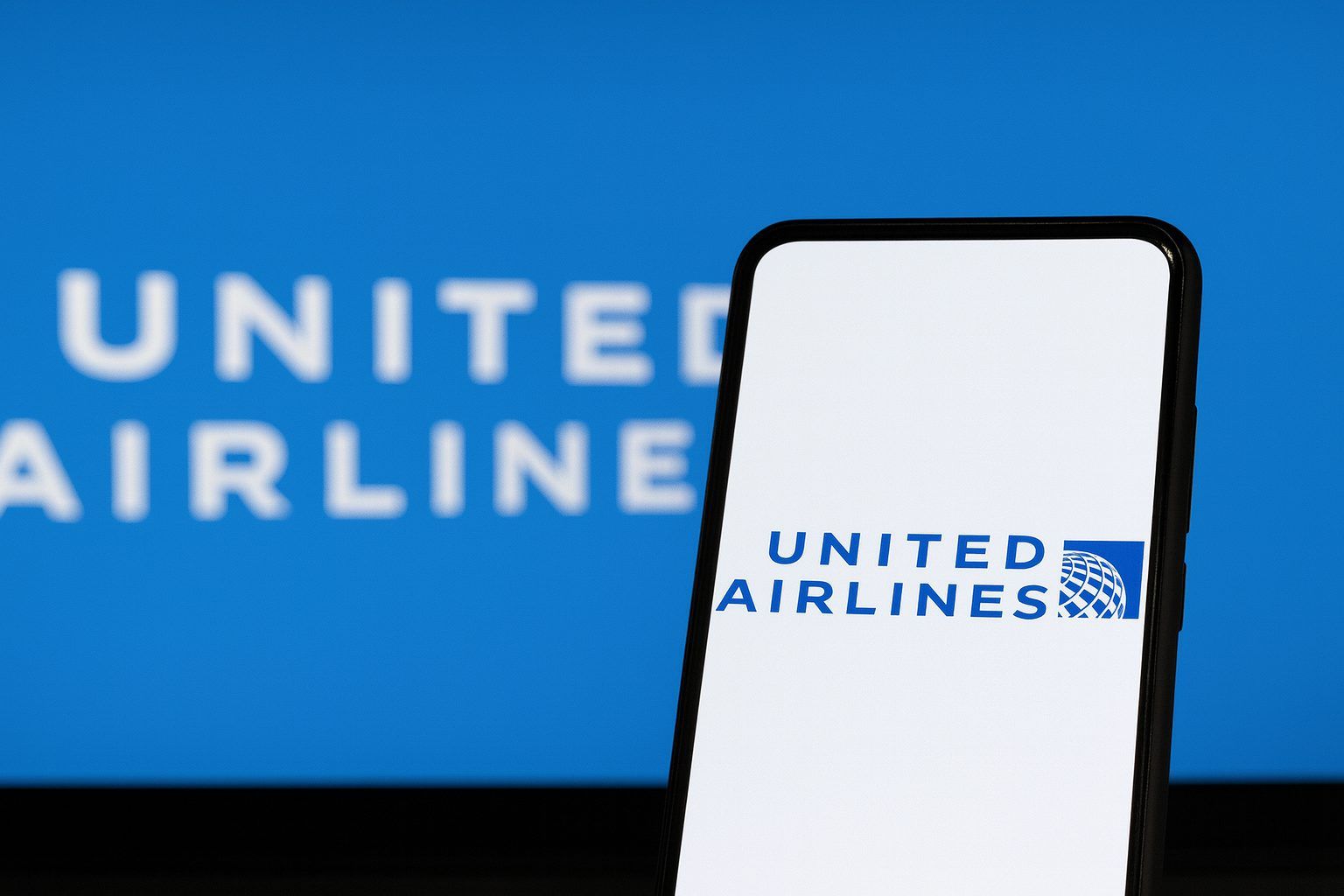United Airlines Holdings, Inc. (NASDAQ: UAL) finished Tuesday’s session trading just under the $99 mark as investors weighed record Thanksgiving travel, easing oil prices and fresh company‑specific headlines – from loyalty program changes to fleet and cargo constraints.
UAL closed around $98.9, up roughly 3.4% from Monday’s close near $95.6, after trading between about $95.5 and $99.9 during the session. [1]
Below is a breakdown of what moved United Airlines stock on November 25, 2025 and what it may mean for investors.
UAL stock price snapshot for November 25, 2025
- Last price: about $98.9 per share
- Daily move: +$3.29, roughly +3.4% vs. Monday’s close around $95.62 [2]
- Recent momentum: up about 7% since last Friday’s close near $92.2 [3]
- YTD performance: roughly +1.9% year to date, slightly ahead of flat but far from its 52‑week high around $116. [4]
Valuation remains moderate even after today’s bounce:
- Trailing P/E: ~8.5–9.5× earnings (depending on data provider and exact timestamp) [5]
- Price‑to‑sales: about 0.5×
- EV/EBITDA: roughly 5.8–5.9×
- Price‑to‑book: around 2.2×. [6]
That puts United trading at a modest discount to the broader airline industry P/E, which Zacks pegs around 10×. [7]
Big picture: Why airline stocks – and UAL – were bid up today
1. Record Thanksgiving travel expectations
The clearest bullish macro driver for UAL today is holiday travel demand. A Zacks Investment Research piece, syndicated by Nasdaq, highlighted United, Delta and American as three U.S. airline stocks to watch as Thanksgiving 2025 is set to be the busiest on record. [8]
Key points from that analysis:
- Trade group Airlines for America (A4A) expects over 31 million passengers to fly on U.S. airlines during the Nov. 21–Dec. 1 Thanksgiving period – an all‑time high. [9]
- U.S. carriers are adding roughly 45,000 extra seats per day to meet demand. [10]
- United specifically is forecast to carry about 6.6 million passengers between Nov. 20 and Dec. 2, with record international bookings, up about 10% year over year for the holiday period. [11]
A separate Reuters story on Thanksgiving travel, also published today, echoed those numbers and noted that United has added about 9% more international seats year over year for the season, even as the industry continues to adapt to the recent U.S. government shutdown and related FAA capacity actions. [12]
In short, investors spent today looking past recent disruption and focusing on strong near‑term revenue visibility for United over the next two weeks.
2. Oil prices ease on Ukraine peace‑talk optimism
United and the broader airline group also benefited from softer oil prices. Coverage of today’s market action repeatedly flagged that optimism around U.S.‑brokered Russia‑Ukraine peace talks has pressured crude lower, easing worries about jet fuel costs heading into 2026. [13]
Sherwood’s market wrap, for example, highlighted that “Ukraine peace talks send oil prices down, boosting major airline stocks”, listing UAL alongside other carriers and citing intraday prices near $98.9. [14]
Lower fuel expectations are particularly important for a network carrier like United, which runs a large international wide‑body fleet where fuel is a major line item in the cost structure.
3. Analyst sentiment stays broadly supportive
Investor psychology also leaned positive thanks to fresh and recent analyst commentary:
- Bernstein reiterated its “Buy” rating on UAL with a $123 price target, in focus again today after Insider Monkey recapped the call in a November 25 article. [15]
- Bernstein had already nudged that target up from $121 earlier this month, citing United’s strong execution and premium revenue growth. [16]
- The report emphasized impressive Q3 2025 results:
- Q3 operating revenue up 2.6% year over year, driven by a 6% jump in premium cabin revenue and 9% growth in loyalty revenue.
- Adjusted EPS of $2.78, beating internal guidance and Wall Street consensus by about $0.10.
- Q4 EPS guidance of $3.00–$3.50, above analysts’ consensus near $2.87, with management calling for the highest total operating revenue in company history. [17]
In a separate piece, MarketBeat today flagged United, American and Delta as the three airline stocks with the highest recent dollar trading volume, noting potential upside for UAL from a strong U.S. dollar and ongoing share buybacks. [18]
That combination of solid fundamentals, record holiday demand and supportive analyst coverage created a favorable backdrop for buyers as trading progressed.
Company‑specific headlines from November 25 that matter for UAL
Today wasn’t just macro and analyst chatter; several United‑specific stories hit the wires on November 25 that investors are parsing for longer‑term implications.
1. MileagePlus quietly devalues close‑in award tickets
On the loyalty side, United drew criticism after quietly increasing the miles required for many short‑notice award tickets.
A detailed report from Live and Let’s Fly showed that “saver” domestic awards booked within about two weeks of departure that had typically cost 15,000 miles one way are now often pricing around 20,000 miles or more, a roughly 33% increase, with no prior notice to customers. [19]
The article underscores two key points relevant for investors:
- Revenue & yield: Higher award prices can support revenue per seat by nudging last‑minute travelers toward paid fares or extracting more value per mile redeemed. Over time, that can be a modest tailwind to unit revenue.
- Brand & loyalty risk: Frequent flyers tend to react badly to “stealth” devaluations. Repeated no‑notice changes may erode trust in MileagePlus, United’s high‑margin loyalty engine, even if short‑term financial metrics benefit. [20]
For now, markets seem more focused on the near‑term revenue upside than on potential loyalty fatigue, but this is a slow‑burn risk to watch.
2. Boeing 777 engine issues highlight fleet age and capacity risk
On the fleet side, aviation outlet Dj’s Aviation published a piece today titled “United Airlines Has Boeing 777 Problems”, spotlighting ongoing engine constraints on the airline’s Boeing 777‑200 fleet. [21]
Key details:
- United has 74 Boeing 777‑200s, with an average age of roughly 26.5 years, making them among the older wide‑bodies in the market. [22]
- Fleet data cited in the article show that around 10 of those 74 aircraft are currently parked, with only about 64 listed as active, as the carrier battles shortages of Pratt & Whitney PW4000 engines. [23]
- The engine issues tie back to safety concerns and inspections following the well‑publicized UA328 incident in 2021, when a Pratt & Whitney‑powered 777 suffered an engine failure shortly after take‑off from Denver. [24]
Why this matters for the stock:
- Capacity pressure: Grounded long‑haul aircraft can force United to cut or reshuffle routes, potentially limiting international capacity growth just as demand and yields are strong.
- Capex & fleet renewal: The article highlights United’s reliance on aging 777s and notes that incoming Boeing 787 Dreamliners are crucial to easing the bottleneck – but deliveries are constrained by broader supply‑chain and quality issues. [25]
- Risk perception: Investors are already sensitive to operational shocks after this month’s FAA‑related schedule cuts and tech outages; continued headlines about aircraft groundings may keep a mild risk discount in the valuation. [26]
3. Seattle fuel shortage forces a narrowbody cargo embargo
United’s cargo business also made news today.
According to an IndexBox report, United will temporarily halt cargo on narrowbody flights at Seattle‑Tacoma International Airport (Sea‑Tac) after a fuel pipeline leak created supply constraints at the airport. [27]
Highlights:
- The embargo covers all cargo on single‑aisle passenger aircraft to and from Seattle — including common types like the Boeing 737‑800 and Airbus A320 — except for small parcels under 100 pounds and life‑saving medical shipments. [28]
- The move is explicitly framed as a fuel‑conservation measure, to remain in effect “until further notice.”
- The underlying problem stems from BP’s Olympic Pipeline, which has been shut more than a week due to a leak near Everett, Washington. Repairs and a partial restart plan are in progress. [29]
Cargo is a smaller but high‑margin revenue stream for United. While the Seattle embargo is likely a temporary and localized drag, it adds to the narrative of operational friction during what should be a seasonally strong period.
Flows and positioning: options “whales” bet bullish on UAL
Beyond the common stock, options markets also flashed bullish signals on United today.
A Benzinga “whale activity” report on industrial stocks lists UAL among the 10 names with notable options trades in today’s session. [30]
For United specifically:
- The standout trade was a bullish call sweep on the $95 strike calls expiring December 19, 2025, with total premium around $146,000. [31]
- Such call sweeps often reflect aggressive institutional buying, as orders are broken up across multiple exchanges to get filled quickly.
While a single options flow doesn’t guarantee direction, it reinforces the positive sentiment we’re seeing in the stock price and analyst commentary today.
Fresh media coverage: “Airline stocks to watch” narrative builds
United also features prominently in multiple “airline stocks to watch” round‑ups published today:
- Zacks / Nasdaq: Puts UAL in a short list of three U.S. airline stocks positioned to benefit from record Thanksgiving travel, noting that earnings estimates for 2025 and 2026 have been revised higher by about 5.9% and 4.6% over the past 60 days. [32]
- MarketBeat: Lists United as one of the top airline stocks by recent dollar trading volume, highlighting upside potential from share repurchases and broader cyclicality in the group. [33]
- Insider Monkey: Reiterates that Bernstein still views United as one of the “best airline stocks to buy heading into 2026”, given its strong Q3 performance and constructive guidance. [34]
Together, these articles help shape the Google News / financial‑media narrative around UAL as:
A cyclical airline stock with solid near‑term demand, reasonable valuation, and some operational hair (fleet age, cancellations, loyalty devaluations) that investors must weigh.
Balancing the bull and bear cases after today’s rally
Bullish factors emphasized today
- Record holiday demand
- 6.6 million expected United passengers over the Thanksgiving window, with record international bookings. [35]
- Improving earnings profile
- Valuation still reasonable
- P/E in the high single digits and EV/EBITDA under 6×, slightly below or in line with the airline peer group, suggesting no obvious bubble after today’s move. [38]
- Supportive analyst and options sentiment
- Tailwind from lower oil prices
- Ukraine peace‑talk optimism and oversupply concerns have pushed crude lower, easing fuel worries into 2026. [41]
Risks and red flags in today’s headlines
- Operational strain & capacity constraints
- Customer‑unfriendly loyalty moves
- A 33% jump in close‑in award prices without notice could gradually erode goodwill among MileagePlus members, even if it boosts near‑term yields. [44]
- Regulatory & political backdrop
- The recent U.S. government shutdown and related FAA capacity reductions have already forced significant schedule changes and cancellations across the industry, including United. [45]
- Policy headlines – from FAA rules to passenger‑rights debates – can impact costs and capacity with little warning.
- Recent downgrade still fresh
- Earlier in November, Wolfe Research trimmed its outlook on UAL, citing concerns about softer demand and limited upside in revenue passenger miles; the stock dropped about 3% on that news. [46]
What today’s move could mean for UAL investors
For traders and investors watching United after November 25’s rally, a few themes stand out:
- Momentum vs. resistance: The stock has now climbed roughly 7% in just a few sessions, approaching the psychologically important $100 level. Short‑term traders will watch whether UAL can hold above the mid‑90s and build a base below or above $100 in the coming days. [47]
- Fundamentals anchored by travel demand: Record Thanksgiving volumes, recovering international demand and a robust loyalty franchise are supporting the earnings story into late 2025 and early 2026. [48]
- Valuation still tied to cycle risk: Even at under 10× earnings, airlines are cyclical, and United is not immune to shocks – whether geopolitical, regulatory, operational or macro. [49]
- Operational headlines matter: Engine issues, cargo embargoes, and tech outages can quickly shift sentiment, especially when they hit during peak travel periods. Investors will watch closely for updates on the Boeing 777 fleet and the duration of the Seattle cargo restrictions. [50]
As always, this article is informational and not investment advice. Anyone considering UAL should weigh today’s positive catalysts against the structural risks of the airline business, their own risk tolerance, and diversified portfolio needs.
References
1. stockanalysis.com, 2. stockanalysis.com, 3. stockanalysis.com, 4. finance.yahoo.com, 5. finance.yahoo.com, 6. www.tradingview.com, 7. www.zacks.com, 8. www.nasdaq.com, 9. www.nasdaq.com, 10. www.nasdaq.com, 11. www.nasdaq.com, 12. www.reuters.com, 13. m.economictimes.com, 14. sherwood.news, 15. www.insidermonkey.com, 16. www.insidermonkey.com, 17. www.insidermonkey.com, 18. www.marketbeat.com, 19. liveandletsfly.com, 20. liveandletsfly.com, 21. djsaviation.net, 22. djsaviation.net, 23. djsaviation.net, 24. djsaviation.net, 25. djsaviation.net, 26. www.reuters.com, 27. www.indexbox.io, 28. www.indexbox.io, 29. www.indexbox.io, 30. www.benzinga.com, 31. www.benzinga.com, 32. www.nasdaq.com, 33. www.marketbeat.com, 34. www.insidermonkey.com, 35. www.nasdaq.com, 36. www.insidermonkey.com, 37. www.nasdaq.com, 38. www.tradingview.com, 39. www.insidermonkey.com, 40. www.benzinga.com, 41. m.economictimes.com, 42. djsaviation.net, 43. www.indexbox.io, 44. liveandletsfly.com, 45. www.reuters.com, 46. simplywall.st, 47. stockanalysis.com, 48. www.nasdaq.com, 49. www.zacks.com, 50. djsaviation.net








